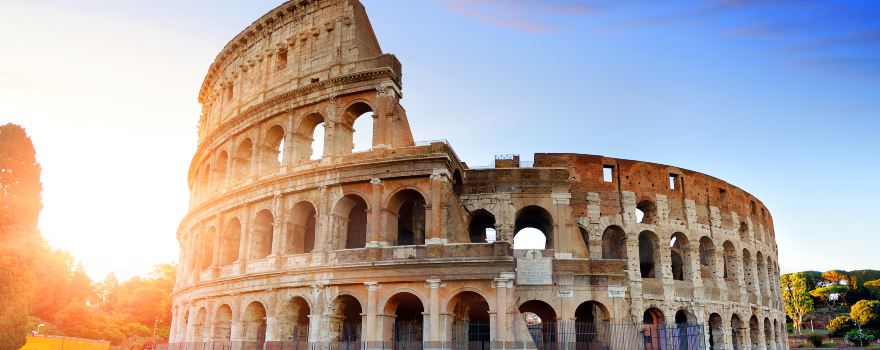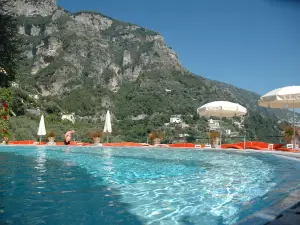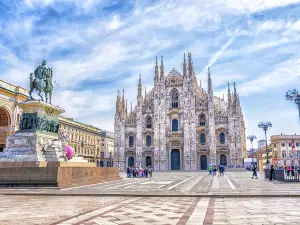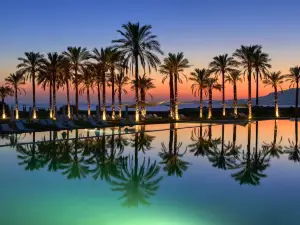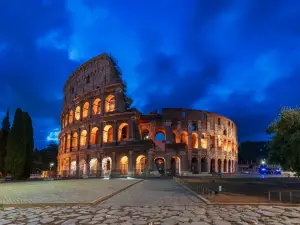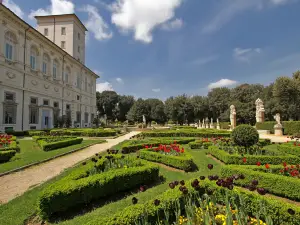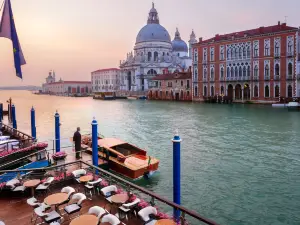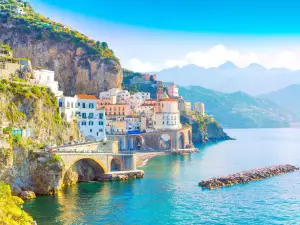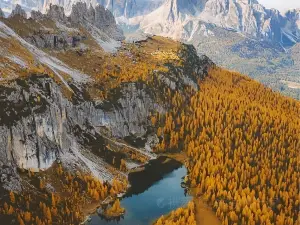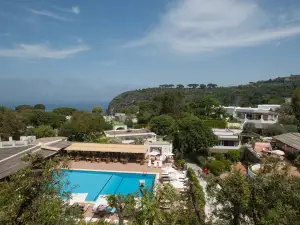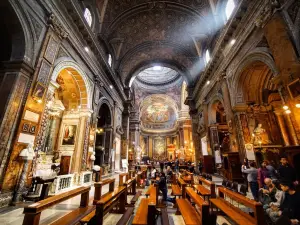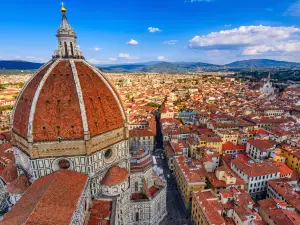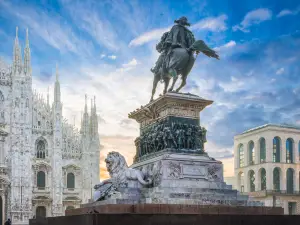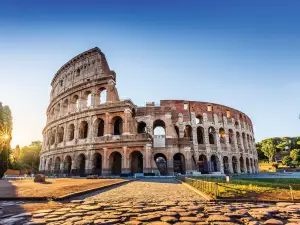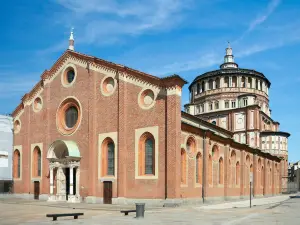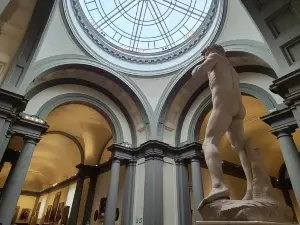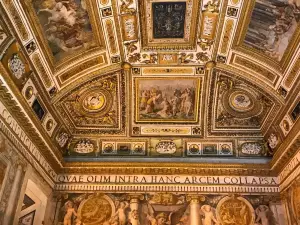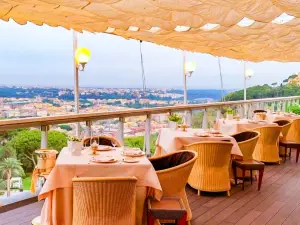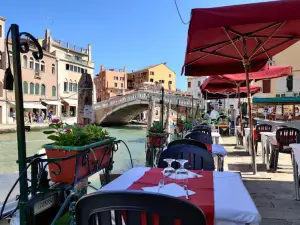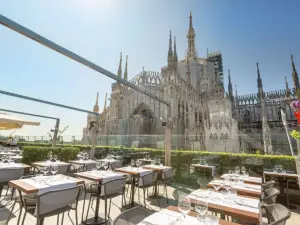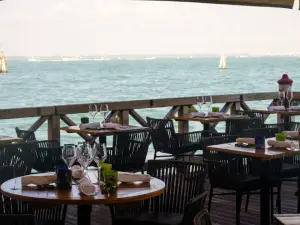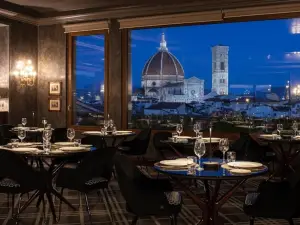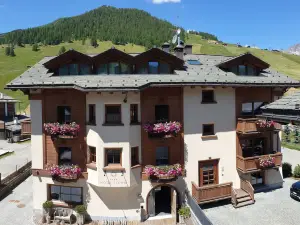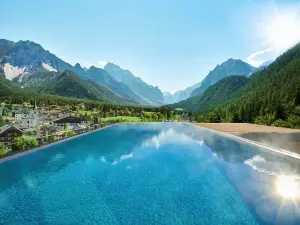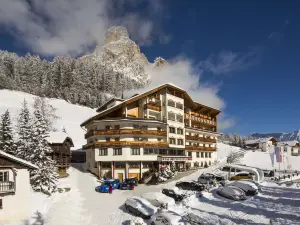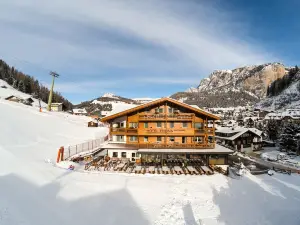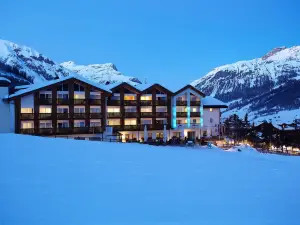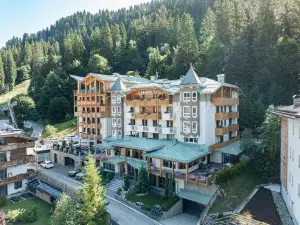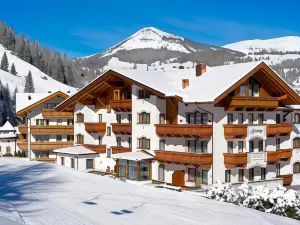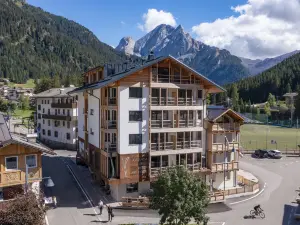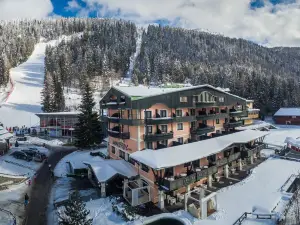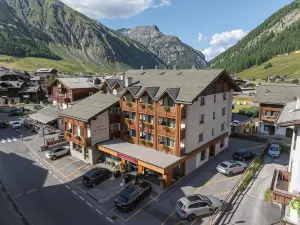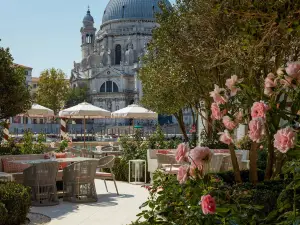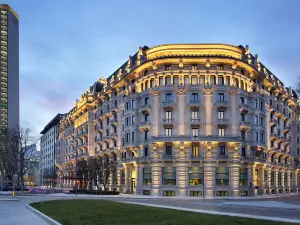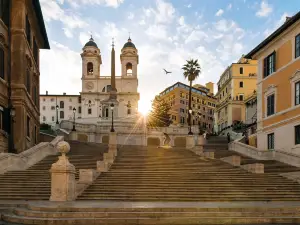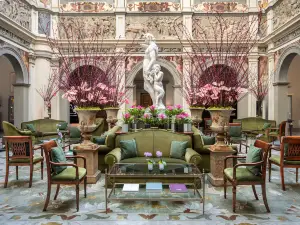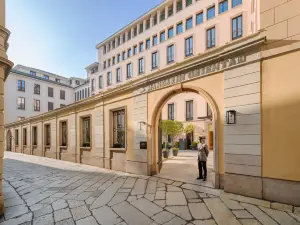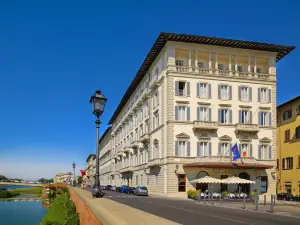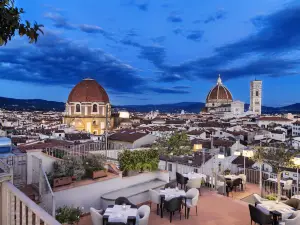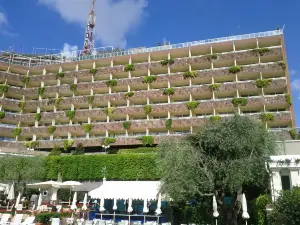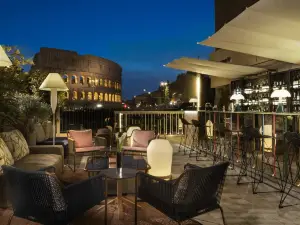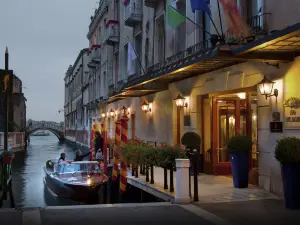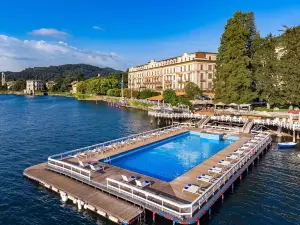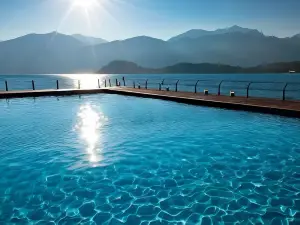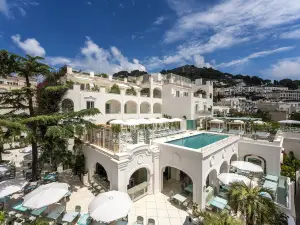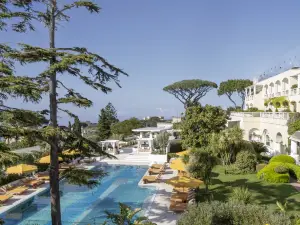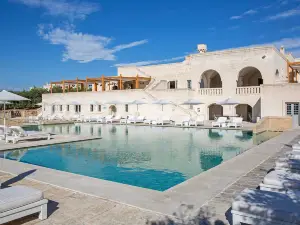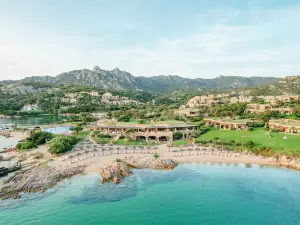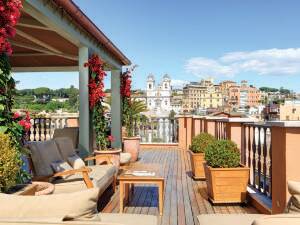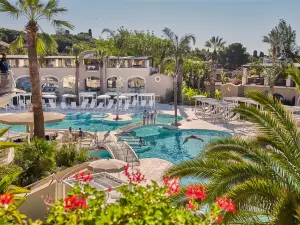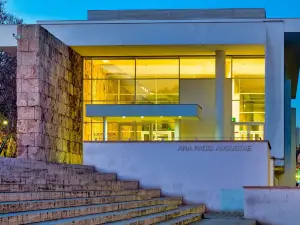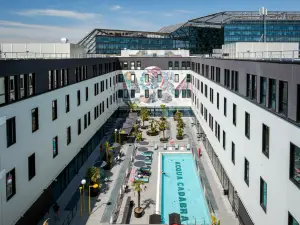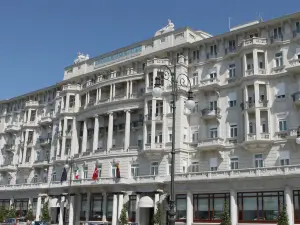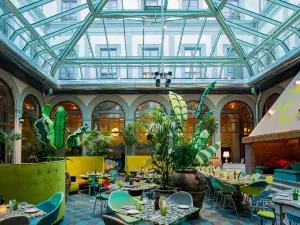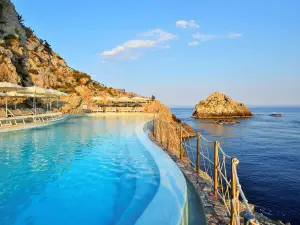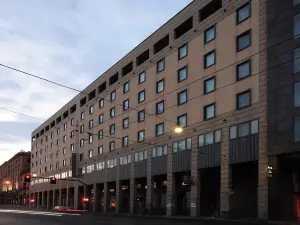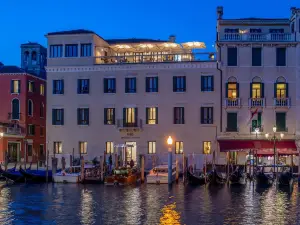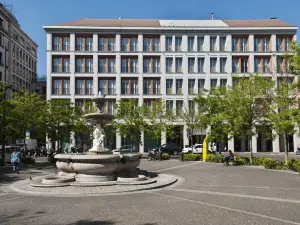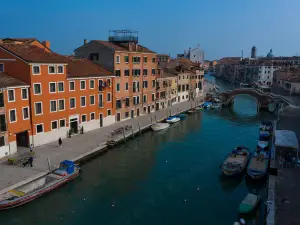Italy independent travel guide (2025): top things to do, popular tourism attractions, itinerary planning, accommodation, food, transportation, weather, and more - everything you need to know (updated August, 2025) | Trip.com
About Italy
Italy Local Experiences Map

Trending in Italy
Italy Local Travel Guide 2025
Italy Brief Guide
Italy, a nation profoundly steeped in history and culture, offers travelers an extensive array of experiences. The ancient Roman Colosseum, the Renaissance city of Florence, and the canals of Venice speak volumes about Italy's significant role in world history and art. Italy's iconic architectural marvels are a big draw. The Colosseum in Rome, Venice Canals, and the Leaning Tower of Pisa offer the tourists a glimpse into Italy's grandeur and architectural ingenuity. Italy is heaven for food lovers. Italian cuisine is world-renowned for its delicious and unique dishes, like Neapolitan pizza, lasagne, spaghetti, etc. Italy's food markets are also worth exploring, which engage tourists in an authentic gastronomic adventure.
Italy Must-try local experiences
1. Explore the Ancient Ruins Explore the Colosseum, Roman Forum, and Palatine Hill to experience the grandeur of ancient Rome. Additionally, Pompeii is another ancient city preserved under the ash of Mount Vesuvius. It completely captures the daily life of the Pompeii people from over 2,000 years ago, allowing you to appreciate the unique lifestyle of ancient Rome. 2. Embrace the Beauty of Art in Florence The Uffizi and Accademia Galleries house masterpieces by Michelangelo, Leonardo da Vinci, and Botticelli, showcasing the art of the Renaissance era. 3. Discover Venice Canal Cruising and Carnival Experience romantic charm with a gondola ride through its canals. St. Mark's Basilica and the Doge's Palace are highly recommended places. In February, the Venice Carnival features elaborate masks, costumes, and parades that reflect Venetian culture. 4. Discover a Fantastic Driving Tour Drive along the Amalfi Coast, stopping in towns like Positano and Ravello to enjoy the stunning coastal views and colorful buildings. Also, taking a scenic drive through Tuscany is a great choice, you can drive through rolling hills, stopping at charming villages and vineyards for unforgettable moments. 5. Enjoy the Serene Beauty of Lake Como Lake Como is renowned for its favorable climate and lush vegetation, surrounded by charming towns and luxurious villas. 6. Experience the Palio Horse Race in Siena The Palio di Siena is an eagerly awaited summer event in Tuscany. This historic horse race dates back to 1633 and occurs twice a year in Piazza del Campo, Siena’s medieval square. Siena fully embraces this vibrant tradition. 7. Local Cuisine Experience the culinary treasures of Italy, from Neapolitan pizza to Sicilian cannoli, with each region offering its unique specialties. 8. Shop in Milan's Fashion District Explore the Galleria Vittorio Emanuele II, home to high-end boutiques and designer stores, which are ideal for luxury shopping. 9. Photographing the Leaning Tower of Pisa Embrace the opportunity to capture the iconic tilt of this renowned landmark. 10. Relax in the Thermal Baths of Saturnia Where you can soak in natural hot springs in Tuscany. These springs are believed to have healing properties and offer a truly relaxing experience.
Italy Best cities to visit
Milan is one of the world's famous international metropolises. With regards to art and fashion, it has left a huge and indelible impression. The second largest city in Italy, Milan has a long and storied history. Inside the city there are no few ancient monuments. The Duomo di Milano (Milan Cathedral) is famous around the world. The shopping district around the Galleria Vittorio Emanuele II and the Milan Fashion Week, held twice a year, make it an unshakable force in the fashion world. AC Milan and Inter Milan are two famous football clubs that make Milan a pilgrimage site for many football fans from around the world.
Italy Transportation
Italy is well-connected to other countries primarily by air and rail. Major airports in Rome and Milan serve as the principal hubs for intercontinental flights, with direct flights available from numerous global locations. Additionally, Italy’s extensive European railway network links its cities to other European capitals, providing scenic routes via the Alps into cities like Venice or Milan. Low-cost airlines and buses also offer economical travel options across Europe into Italy.
Italy Best Time to Visit
The best time to visit Italy is during the spring (April-May) or early fall (September-October). These periods offer pleasant weather, lower prices, and thinner crowds, making it ideal for exploring tourist attractions comfortably. Spring brings mild temperatures perfect for outdoor activities and experiencing the local culture without the inconvenience of high summer heat. Early fall is wonderful for enjoying vibrant landscapes and participating in the grape harvest season, which is especially appealing to wine enthusiasts.
Italy Travel Tips
1. Book Popular Attractions in Advance: For popular attractions like the Vatican Museums, Colosseum, and Leonardo da Vinci's 'The Last Supper' in Milan, advance reservations are essential. Book your tickets online to avoid long queues and ensure entry. 2. Cinque Terre Trekking Card: If you plan to hike between the villages of Cinque Terre, you'll need to purchase a Cinque Terre Card. This pass grants access to the hiking trails and includes unlimited train travel between the villages. The card also offers free use of local buses and public toilets, and discounts at certain museums. 3. Avoid Eating Near Monuments: In cities like Rome and Florence, it's illegal to eat or drink near main monuments and fountains. Respect these rules to avoid fines and maintain the cleanliness of historic sites. 4. Beware of Pickpockets: Popular tourist areas in major Italian cities can be hotspots for pickpockets. Keep your belongings close, use anti-theft bags, and be extra vigilant in crowded places like train stations. Wear a money belt, avoid using back pockets, and stay alert in crowded areas. Be cautious of distractions like commotion or people bumping into you. 5. Validate Train Tickets: Always validate your train ticket before boarding in Italy. Use the small green at the station platform to stamp your ticket with the date and time. This applies mainly to regional train tickets without a specific time. Failure to do so can result in fines, even with a valid ticket.
Italy Useful Guide
When traveling in Italy, it's crucial to be aware of emergency numbers: 112 provides overall emergency services, 113 for police, 115 for the fire brigade, and 118 for medical emergencies. Given Italy's geological setting, be prepared for natural disasters like earthquakes and floods by familiarizing with local safety protocols. Driving rules are stringent; drive on the right, observe speed limits, and use the necessary safety equipment like seat belts and reflective jackets. Always carry essential documents when driving. In case of an emergency, Italy is well-equipped with prompt and efficient emergency services, ensuring quick responses to any situation. Always ensure you have travel insurance to cover potential emergencies and keep the contact numbers saved for immediate access.
Trip.Best: Italy
Popular Destinations
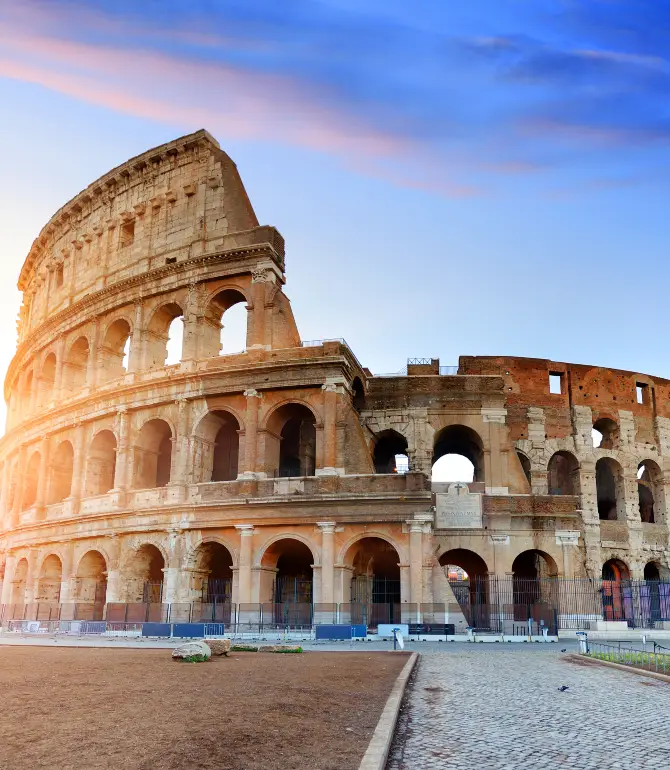
Rome
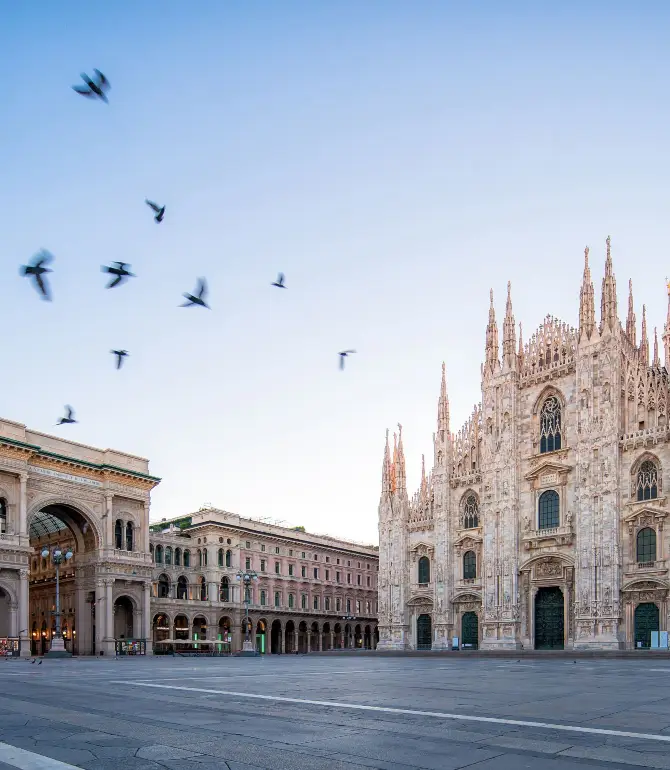
Milan
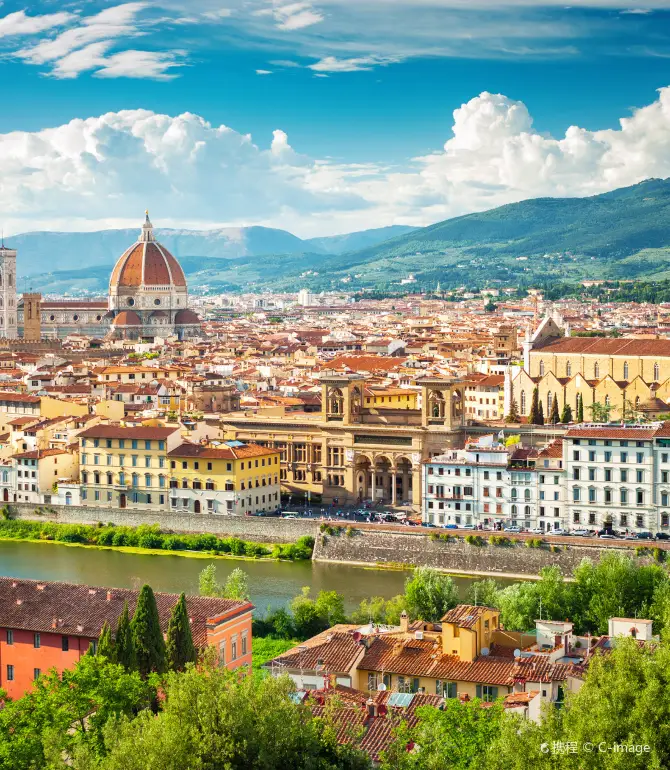
Florence
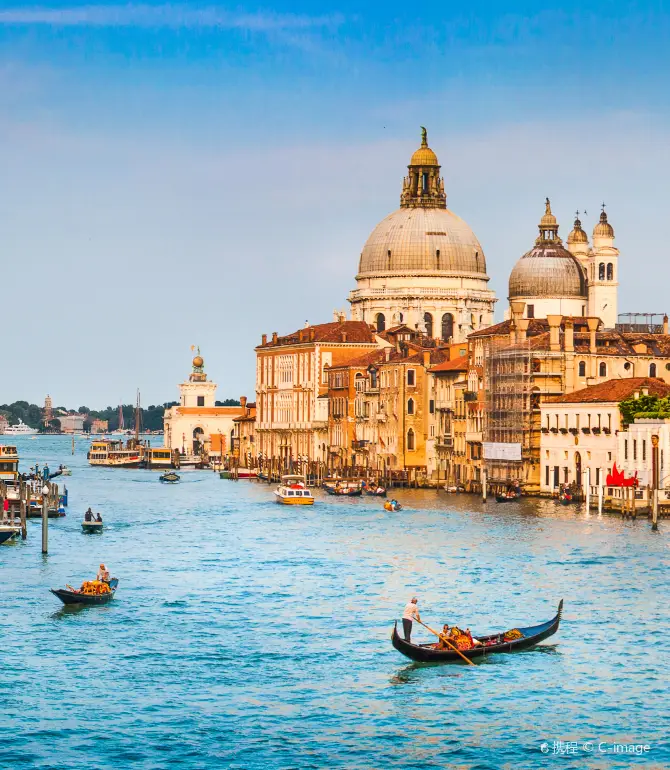
Venice
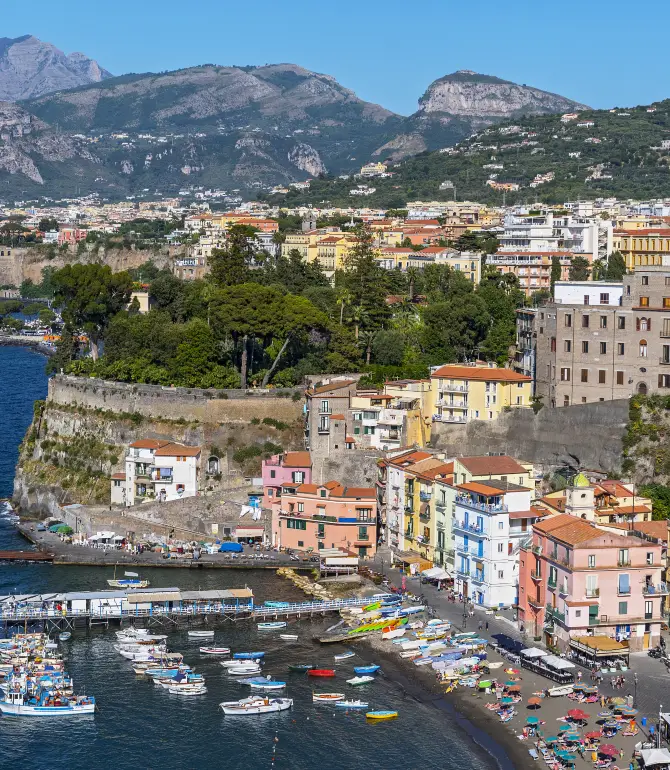
Naples
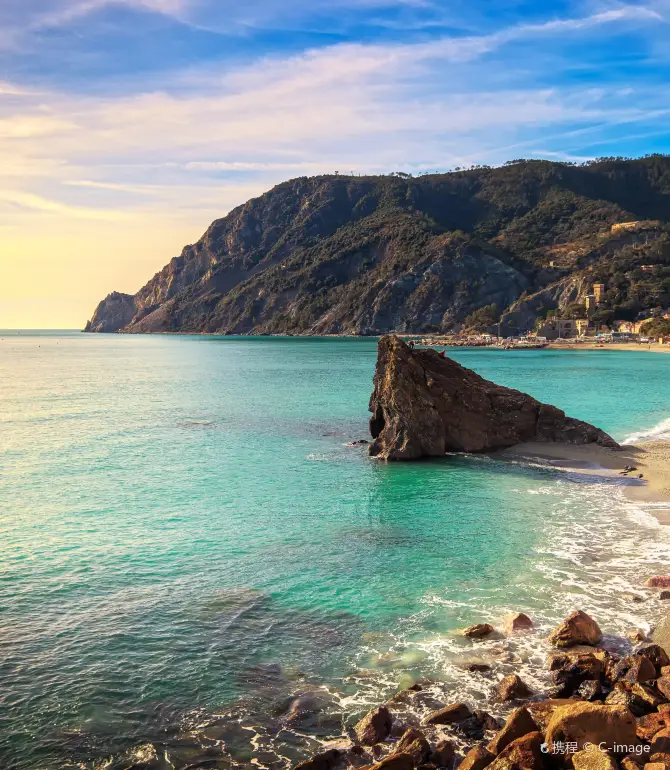
Cinque Terre
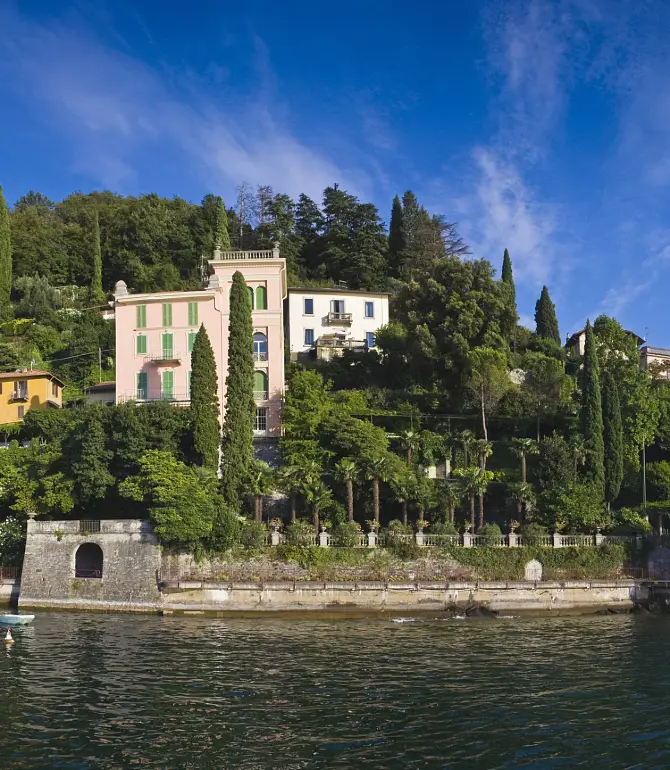
Lake Como
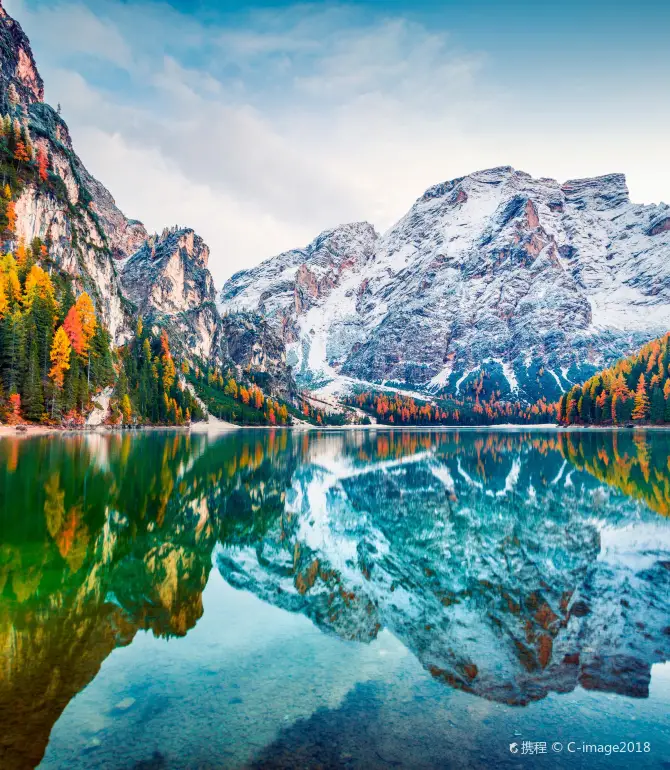
Dolomites
Things to do in Italy
What to do
Pantheon
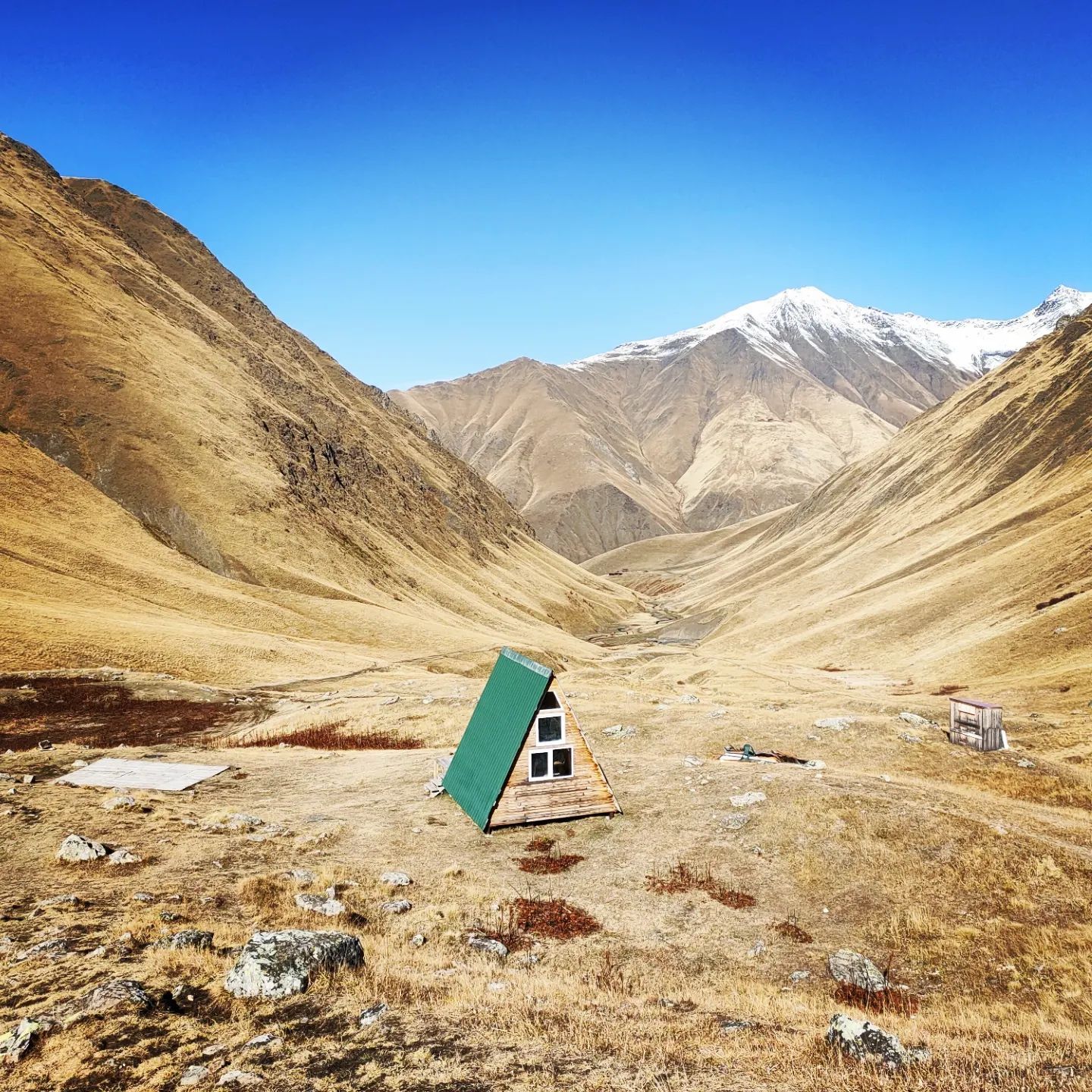 Api Kho:“Everyone has to visit the Pantheon in their lifetime. I am in shock that something so magnificent could be built in 126 AD and remain is such remarkable condition. The exterior is incredibly imposing with grand columns holding up the structure. The interior consists of a single perfectly symmetrical circular space with an enormous dome. There are beautiful columns, sculptures, and paintings everywhere. It was originally a Pagan temple and symbol of Rome’s power, but became a church that is in use to this day. There is a huge high alter near the front, built in the early 18th century. All the pagan statues and artwork were removed and replaced with ones honoring to Christianity. Everything in this building is perfectly symmetrical with three sets of columns on each side flanked with artwork in the middle. Every bit of architecture from the floor to the ceiling is so intricate. The marble floor is from three different countries. The red is from Egypt, the white is from Asia Minor.”
Api Kho:“Everyone has to visit the Pantheon in their lifetime. I am in shock that something so magnificent could be built in 126 AD and remain is such remarkable condition. The exterior is incredibly imposing with grand columns holding up the structure. The interior consists of a single perfectly symmetrical circular space with an enormous dome. There are beautiful columns, sculptures, and paintings everywhere. It was originally a Pagan temple and symbol of Rome’s power, but became a church that is in use to this day. There is a huge high alter near the front, built in the early 18th century. All the pagan statues and artwork were removed and replaced with ones honoring to Christianity. Everything in this building is perfectly symmetrical with three sets of columns on each side flanked with artwork in the middle. Every bit of architecture from the floor to the ceiling is so intricate. The marble floor is from three different countries. The red is from Egypt, the white is from Asia Minor.”Cathedral of Santa Maria del Fiore
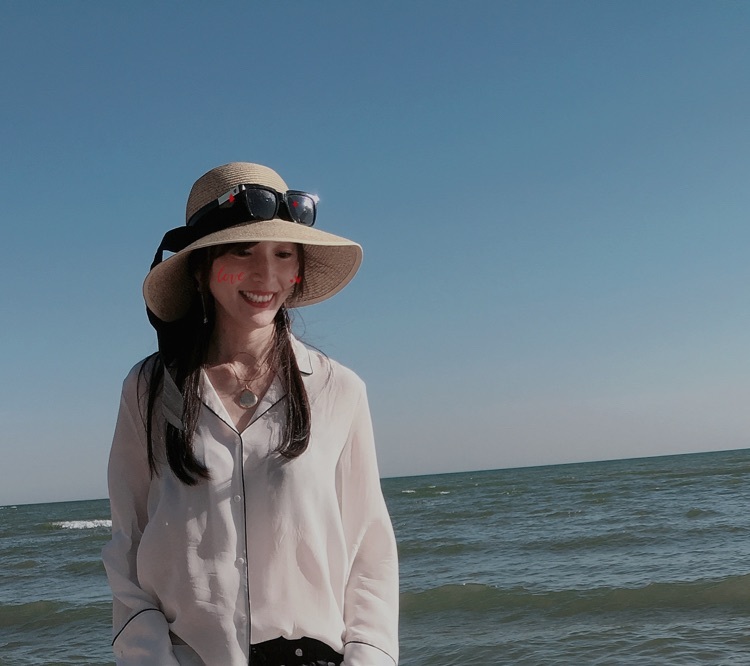 好脾气懒猫:“The Cathedral of Santa Maria del Fiore is truly magnificent. Admission is free, allowing you to experience the grandeur of its interior without having to pay. Tickets can be purchased through the side entrance, bypassing the main entrance line, and include access to the bell tower. However, if you're looking for a panoramic view of Florence from above, you can choose between the dome or Giotto's bell tower, or both. The dome offers a close-up view of the frescoes and panoramic views of the city. The bell tower also offers a fantastic view, allowing you to capture the dome in full photographic space. Both steps are quite demanding, as they are quite long and challenging.”
好脾气懒猫:“The Cathedral of Santa Maria del Fiore is truly magnificent. Admission is free, allowing you to experience the grandeur of its interior without having to pay. Tickets can be purchased through the side entrance, bypassing the main entrance line, and include access to the bell tower. However, if you're looking for a panoramic view of Florence from above, you can choose between the dome or Giotto's bell tower, or both. The dome offers a close-up view of the frescoes and panoramic views of the city. The bell tower also offers a fantastic view, allowing you to capture the dome in full photographic space. Both steps are quite demanding, as they are quite long and challenging.”Uffizi Gallery
 好脾气懒猫:“The Fitz Art Gallery is truly breathtaking. Its collection is incredibly rich, and you'll find world-famous paintings at every glance! However, there are so many works that you can only see a fraction of them in five hours. If you don't do your research ahead of time, you'll easily get lost. It's also very crowded, and popular exhibition halls are often crowded, so be sure to reserve time in advance and be physically fit. A full day of walking around is exhausting, but it's definitely worth it!
There are a few must-see treasures in the museum, so do your research ahead of time.
1. Botticelli – The Birth of Venus
2. Botticelli – La Primavera
3. Leonardo da Vinci – The Annunciation
4. Michelangelo – Doni Tondo
5. Raphael – Madonna del Cardellino
6. Titian – Venus of Urbino
7. Caravaggio – Medusa
8. Giotto – Maestà Ognissanti
9. Simone Martini and Lippo Memmi – Annunciazione
10. Rembrandt van Rijn – Self-Portrait as an Old Man”
好脾气懒猫:“The Fitz Art Gallery is truly breathtaking. Its collection is incredibly rich, and you'll find world-famous paintings at every glance! However, there are so many works that you can only see a fraction of them in five hours. If you don't do your research ahead of time, you'll easily get lost. It's also very crowded, and popular exhibition halls are often crowded, so be sure to reserve time in advance and be physically fit. A full day of walking around is exhausting, but it's definitely worth it!
There are a few must-see treasures in the museum, so do your research ahead of time.
1. Botticelli – The Birth of Venus
2. Botticelli – La Primavera
3. Leonardo da Vinci – The Annunciation
4. Michelangelo – Doni Tondo
5. Raphael – Madonna del Cardellino
6. Titian – Venus of Urbino
7. Caravaggio – Medusa
8. Giotto – Maestà Ognissanti
9. Simone Martini and Lippo Memmi – Annunciazione
10. Rembrandt van Rijn – Self-Portrait as an Old Man”Milan Cathedral
 eksan 环游世界:“The Cathedral of Milan (Duomo di Milano) is an iconic building in Milan, Italy, and a world-renowned religious architecture and art gem. Here is its detailed introduction: - Basic Profile: It is the largest Gothic church in the world, second only to St. Peter's Church in the Vatican. Located in the center of Milan, the square was built in 1386 and completed in 1965. It lasted more than five centuries. The building area is 11,700 square meters and can accommodate up to 40,000 people. - Architectural style: a collection of Gothic, neoclassical and baroque styles. The front of the church is61.5 meters wide and 56 meters high. It is divided into five blocks by six groups of generous stone pillars, with 135 minarets and 96 stone ghosts, which is a typical feature of Gothic architecture. - Sculpture art: is the world's most statues of the Gothic church, with more than 6,000 marble statues, 3,159 seats on the exterior of the building, statues are mostly religious themes such as biblical stories, thousands of shapes, extremely complicated and exquisite. - Religious significance: The Cathedral of Milan is the cathedral of Milan, which is of great importance in the Catholic community and is promulgated here by the famous Milan Amnesty Order, which legalized Christianity and became the state religion of the Roman Empire. Napoleon held his coronation in Milan Cathedral in 1805. - Interior decoration: The church has 24 of the world's largest painted glass windows, about 20 meters high, mainly based on the story of Jesus, the sun's shining pattern in the middle meaning justice and love. The church hall supported by 12 giant stone pillars is beautifully decorated and has more than 800 statues alone.”
eksan 环游世界:“The Cathedral of Milan (Duomo di Milano) is an iconic building in Milan, Italy, and a world-renowned religious architecture and art gem. Here is its detailed introduction: - Basic Profile: It is the largest Gothic church in the world, second only to St. Peter's Church in the Vatican. Located in the center of Milan, the square was built in 1386 and completed in 1965. It lasted more than five centuries. The building area is 11,700 square meters and can accommodate up to 40,000 people. - Architectural style: a collection of Gothic, neoclassical and baroque styles. The front of the church is61.5 meters wide and 56 meters high. It is divided into five blocks by six groups of generous stone pillars, with 135 minarets and 96 stone ghosts, which is a typical feature of Gothic architecture. - Sculpture art: is the world's most statues of the Gothic church, with more than 6,000 marble statues, 3,159 seats on the exterior of the building, statues are mostly religious themes such as biblical stories, thousands of shapes, extremely complicated and exquisite. - Religious significance: The Cathedral of Milan is the cathedral of Milan, which is of great importance in the Catholic community and is promulgated here by the famous Milan Amnesty Order, which legalized Christianity and became the state religion of the Roman Empire. Napoleon held his coronation in Milan Cathedral in 1805. - Interior decoration: The church has 24 of the world's largest painted glass windows, about 20 meters high, mainly based on the story of Jesus, the sun's shining pattern in the middle meaning justice and love. The church hall supported by 12 giant stone pillars is beautifully decorated and has more than 800 statues alone.”Piazza del Duomo
 Show闲队长:“Milan Cathedral Square is the heart of the city. The Gothic cathedral is spectacular and the details are as exquisite as works of art! The surrounding area is very lively and suitable for taking photos and checking in, but it is a bit crowded with many tourists. The pigeons are not afraid of people, which adds a bit of fun. It is very convenient to go directly to the subway, but be careful of hawkers. The overall atmosphere is great, free and open, a must-see when you come to Milan!”
Show闲队长:“Milan Cathedral Square is the heart of the city. The Gothic cathedral is spectacular and the details are as exquisite as works of art! The surrounding area is very lively and suitable for taking photos and checking in, but it is a bit crowded with many tourists. The pigeons are not afraid of people, which adds a bit of fun. It is very convenient to go directly to the subway, but be careful of hawkers. The overall atmosphere is great, free and open, a must-see when you come to Milan!”Colosseum
 流浪的大西瓜:“The Colosseum is now a historical site. Originally intended for visitors to watch animals fight, it later evolved into a brutal human fight for various reasons. After all, it's still considered a famous attraction here, so some of its details are worth seeing!”
流浪的大西瓜:“The Colosseum is now a historical site. Originally intended for visitors to watch animals fight, it later evolved into a brutal human fight for various reasons. After all, it's still considered a famous attraction here, so some of its details are worth seeing!”Santa Maria delle Grazie
 Anonymous user:“Best option if you are in Milan and haven’t had the chance to buy the ticket on the official website. Personally, best money I spent so far :)”
Anonymous user:“Best option if you are in Milan and haven’t had the chance to buy the ticket on the official website. Personally, best money I spent so far :)”Leonardo's Last Supper Museum
 Lou La:“Excellent! It was the highlight of the trip! If you’re considering going, just do it!! It’s an experience where the grounds capture the moment and the people are friendly :)”
Lou La:“Excellent! It was the highlight of the trip! If you’re considering going, just do it!! It’s an experience where the grounds capture the moment and the people are friendly :)”Gallery of the Academy of Florence
 Anonymous user:“Although they are more expensive, these are safe and guaranteed tickets which can be bought on dates when the official tickets are sold out, especially closer to your visit date. We received the online tickets a day before our entry. Entrance was crowded but the staff are helpful to guide you to your designated ticket queue line. Inside the galleria was mildly crowded. The Michelangelo David statue was magnificent and there is ample space for you to admire and take pictures. Overall I would recommend this place.”
Anonymous user:“Although they are more expensive, these are safe and guaranteed tickets which can be bought on dates when the official tickets are sold out, especially closer to your visit date. We received the online tickets a day before our entry. Entrance was crowded but the staff are helpful to guide you to your designated ticket queue line. Inside the galleria was mildly crowded. The Michelangelo David statue was magnificent and there is ample space for you to admire and take pictures. Overall I would recommend this place.”Castel Sant'Angelo
 138***29:“As soon as I approached the scenic spot, I was attracted by the angel sculptures on both sides of the bridge. When entering Castel Sant'Angelo, you must go to the top to have a look, where you can overlook many ancient monuments on the other side of the river, including a corner of the Colosseum. In addition, the sandwiches at the Central Cafe are good and cheap, but you have to sit there to eat. If the sun is strong, it will be too hot and there is basically no shade.”
138***29:“As soon as I approached the scenic spot, I was attracted by the angel sculptures on both sides of the bridge. When entering Castel Sant'Angelo, you must go to the top to have a look, where you can overlook many ancient monuments on the other side of the river, including a corner of the Colosseum. In addition, the sandwiches at the Central Cafe are good and cheap, but you have to sit there to eat. If the sun is strong, it will be too hot and there is basically no shade.”What to eat
Risoelatte
 travelererer:“Risoelatte is located in the center of Milan. It is an Italian restaurant with a long history. The environment is simple, but the feeling is very comfortable. The food here tastes extremely authentic.”
travelererer:“Risoelatte is located in the center of Milan. It is an Italian restaurant with a long history. The environment is simple, but the feeling is very comfortable. The food here tastes extremely authentic.”LA PERGOLA
 travelererer:“A very famous local Italian restaurant. Their pasta has a very rich sauce. The noodles are also very chewy. Steak with French fries is also their specialty. The oysters are also very plump and juicy.”
travelererer:“A very famous local Italian restaurant. Their pasta has a very rich sauce. The noodles are also very chewy. Steak with French fries is also their specialty. The oysters are also very plump and juicy.”Trattoria Bar Pontini
 Kevin:“A small shop near the train station. The various pastas they make taste good and the dishes are served quickly, so you can still make it in time even if you are catching a train. The seafood pasta is quite affordable and contains a lot of seafood.”
Kevin:“A small shop near the train station. The various pastas they make taste good and the dishes are served quickly, so you can still make it in time even if you are catching a train. The seafood pasta is quite affordable and contains a lot of seafood.”Seta
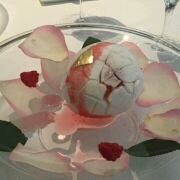 Princesstt:“The entrance is not very ostentatious, but when you walk in, you will feel very comfortable. Their service is also very considerate. Every glass wine glass is polished and transparent. I like their red wine very much.”
Princesstt:“The entrance is not very ostentatious, but when you walk in, you will feel very comfortable. Their service is also very considerate. Every glass wine glass is polished and transparent. I like their red wine very much.”Pizzeria da Baffetto
 没有蜡olling:“Successfully checked in at the famous pizza shop [Pizzeria da Baffetto] in Rome
The fat guy likes this thin and crispy pizza, sprinkled with olive chili oil and chili powder, I know that after he is satisfied with this meal, he will want to eat pizza next time [haha]”
没有蜡olling:“Successfully checked in at the famous pizza shop [Pizzeria da Baffetto] in Rome
The fat guy likes this thin and crispy pizza, sprinkled with olive chili oil and chili powder, I know that after he is satisfied with this meal, he will want to eat pizza next time [haha]”Da Nerbone
 cparissh:“It's on the first floor of the Central Market, but it's hard to find. Unless you go in through the side door, you can see it at a glance. Otherwise, I had to walk around for a long time before I found it. In addition to the tripe, they have other parts that look like beef, but I can't communicate in Italian at all, so I asked for tripe buns. And the store owner knows that most foreign tourists choose their signature ones, 4 euros each, and won't talk to you too much. The taste is okay, and the bread outside is French, very hard.”
cparissh:“It's on the first floor of the Central Market, but it's hard to find. Unless you go in through the side door, you can see it at a glance. Otherwise, I had to walk around for a long time before I found it. In addition to the tripe, they have other parts that look like beef, but I can't communicate in Italian at all, so I asked for tripe buns. And the store owner knows that most foreign tourists choose their signature ones, 4 euros each, and won't talk to you too much. The taste is okay, and the bread outside is French, very hard.”MAIO RESTAURANT
 没有蜡olling:“Maio Restaurant on the 7th floor of Rinascente department store in Milan, with the Duomo Church right in front of you. Moët et chandon champagne is great 🍸🍸! I must go there with my good friends next time [love][love]”
没有蜡olling:“Maio Restaurant on the 7th floor of Rinascente department store in Milan, with the Duomo Church right in front of you. Moët et chandon champagne is great 🍸🍸! I must go there with my good friends next time [love][love]”Andrea Aprea Ristorante
 _We***43:“It was an amazing food experience. We went to this restaurant to celebrate my birthday. All dishes were amazing! Everything including the welcome dish!”
_We***43:“It was an amazing food experience. We went to this restaurant to celebrate my birthday. All dishes were amazing! Everything including the welcome dish!”Algiubagio Restaurant
 Kevin:“There is a restaurant at the bus station. It has a large flow of people. The raw beef there tastes pretty good, and you can taste the freshness of the beef. The bread tastes pretty good too, and there is something similar to sweet potato chips.”
Kevin:“There is a restaurant at the bus station. It has a large flow of people. The raw beef there tastes pretty good, and you can taste the freshness of the beef. The bread tastes pretty good too, and there is something similar to sweet potato chips.”Vecchia Roma
 健康美丽的芳芳:“This VECCHIA ROMA is a very family-style western restaurant. We came here for brunch and the environment is really warm and comfortable.”
健康美丽的芳芳:“This VECCHIA ROMA is a very family-style western restaurant. We came here for brunch and the environment is really warm and comfortable.”B-Roof
 _We***43:“The location is great, you can see the Duomo from the panoramic windows, the terrace is closed in winter, but it should be nice to have a sunset dinner in the summer.”
_We***43:“The location is great, you can see the Duomo from the panoramic windows, the terrace is closed in winter, but it should be nice to have a sunset dinner in the summer.”IL PAGLIACCIO
 travelererer:“It is a western restaurant located in a Roman alley. If it weren’t for a local friend who brought us here as a guide, we would definitely not have been able to find this restaurant by ourselves. The food is really delicious.”
travelererer:“It is a western restaurant located in a Roman alley. If it weren’t for a local friend who brought us here as a guide, we would definitely not have been able to find this restaurant by ourselves. The food is really delicious.”Italy Moments: Through Travelers' Eyes

Italy's Autumn Has Reached the Next Level

Tuscany | A golden poem flowing among the hills
![[Dolomites|Dreamlike Mountains of the Alps]](https://ak-d.tripcdn.com/images/1mi3r224x94fffjn71131_W_320_0_R5.jpg?proc=source/trip)
[Dolomites|Dreamlike Mountains of the Alps]

Tuscany | Renaissance poetry and a vineyard romance under the sun

Amalfi|Lemon Paradise on the Cliff and Mediterranean Blues

Italy Family Travel: A Super Detailed Guide You Must Read!

Exclusive Summer Evening Waters, a Fairyland

I don't care about you anymore, I'm in Italy
Best of Italy
About
Site Operator: Trip.com Travel Singapore Pte. Ltd.
